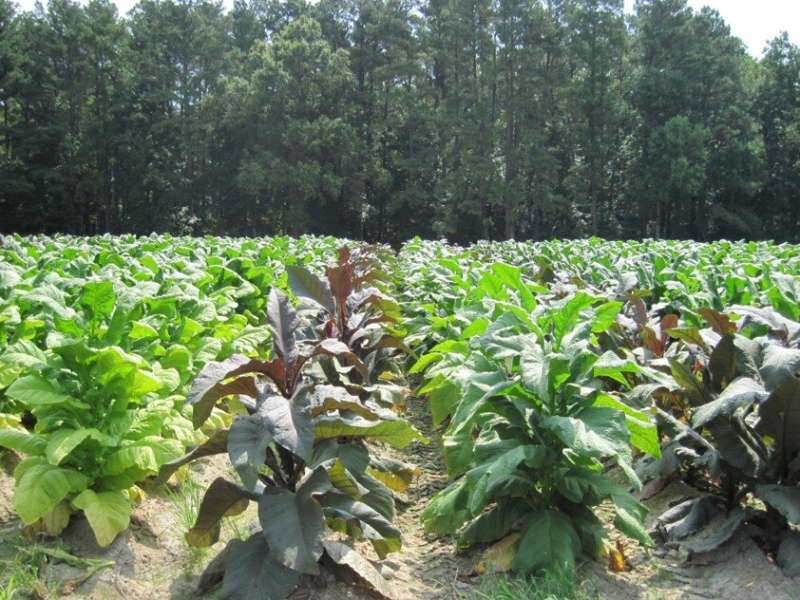New technique reduces nicotine levels, harmful compounds simultaneously in tobacco

North Carolina State University researchers have developed a new technique that can alter plant metabolism. Tested in tobacco plants, the technique showed that it could reduce harmful chemical compounds, including some that are carcinogenic. The findings could be used to improve the health benefits of crops.
“A number of techniques can be used to successfully reduce specific chemical compounds, or alkaloids, in plants such as tobacco, but research has shown that some of these techniques can increase other harmful chemical compounds while reducing the target compound,” said De-Yu Xie, professor of plant and microbial biology at NC State and the corresponding author of a paper describing the research. “Our technology reduced a number of harmful compounds—including the addictive nicotine, the carcinogenic N-nitrosonornicotine (NNN), and other tobacco-specific nitrosamines (TSNAs)—simultaneously without detrimental effects to the plant.”
The technique uses transcription factors and regulatory elements as molecular tools for new regulation designs. Regulatory elements are short, non-coding DNA fragments that control the transcription of nearby coding genes. Transcription factors are proteins that help turn certain genes on or off by binding to regulatory elements. Xie hypothesized that these could be useful molecular tools to design new regulations for engineering new plant traits. Two Arabidopsis transcription factors in particular, PAP1 and TT8, are known to regulate the biosynthesis of anthocyanins, or classes of nutraceutical compounds with antioxidant properties. Xie further hypothesized that these proteins could be used as molecular tools to help repress a number of harmful chemical compound levels, such as nicotine.
“PAP1 regulates pigmentation, so tobacco plants with our overexpressed PAP1 genes are red,” Xie said. “We screened plant DNAs and found that tobacco has PAP1- and TT8-favored regulatory elements near JAZ genes, which repress nicotine biosynthesis. We then proposed that these elements were appropriate tools for a test. In all, we found four JAZ genes activated in red tobacco plants with a designed PAP1 and TT8 cassette overexpressed.”
Xie and his colleagues tested the hypothesis by examining tobacco plants in the greenhouse and in the field and showed the reductions of harmful chemical compounds and nicotine in both types of experiments. NNN levels were reduced from 63 to 79% in leaves from tobacco plants that had PAP1 and TT8 overexpressed, for example. Overall, four carcinogenic TSNAs were significantly reduced by the technique.
Xie believes that the technique holds the potential to be used in other crop plants to promote other beneficial traits and make some foods healthier.
The paper appears in Journal of Advanced Research. Research associate Mingzhu Li is a first author of the paper. Former postdoctoral fellows Xianzhi He and Christophe La Hovary are co-first authors. The research was supported by the R.J. Reynolds Tobacco Co.
Mingzhuo Li et al, A de novo regulation design shows an effectiveness in altering plant secondary metabolism, Journal of Advanced Research (2021). DOI: 10.1016/j.jare.2021.06.017
Citation:
New technique reduces nicotine levels, harmful compounds simultaneously in tobacco (2021, July 12)
retrieved 12 July 2021
from https://phys.org/news/2021-07-technique-nicotine-compounds-simultaneously-tobacco.html
This document is subject to copyright. Apart from any fair dealing for the purpose of private study or research, no
part may be reproduced without the written permission. The content is provided for information purposes only.
For all the latest Science News Click Here
For the latest news and updates, follow us on Google News.

